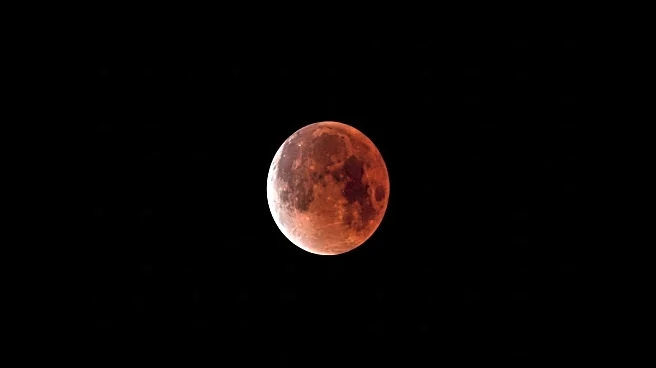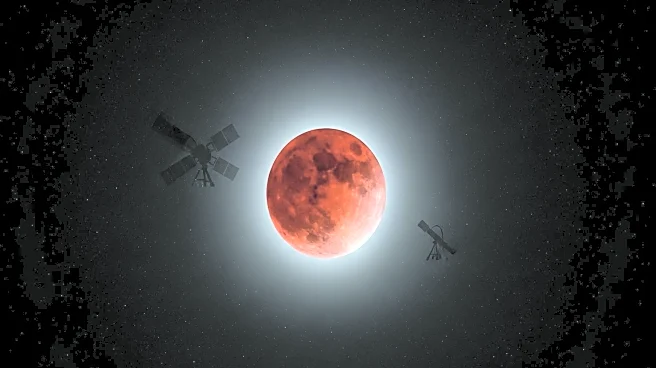What is the story about?
What's Happening?
On September 7, 2025, a total lunar eclipse occurred, resulting in a 'Blood Moon' visible across most of the Eastern Hemisphere. This phenomenon happens when the Sun, Earth, and Moon align, causing the Moon to appear orange-red due to Earth's shadow. Astronauts aboard the International Space Station captured images of the event while orbiting over Central Asia. The eclipse lasted for one hour and 22 minutes, marking the longest duration since November 8, 2022. The reddish hue is caused by sunlight interacting with Earth's atmosphere, where longer wavelengths like reds and oranges pass through, while shorter wavelengths are scattered. The presence of clouds or dust can intensify the red appearance.
Why It's Important?
The Blood Moon is a significant astronomical event that draws attention from scientists and the public alike. It provides an opportunity for scientific observation and photography, contributing to our understanding of atmospheric effects on celestial bodies. The images captured by astronauts are valuable for educational and research purposes, enhancing public interest in space exploration. Such events also highlight the capabilities of the International Space Station in supporting scientific endeavors and fostering international collaboration in space research.
What's Next?
The next total lunar eclipse is scheduled for March 3, 2026, and will be visible from the Americas, East Asia, Australia, and the Pacific. This upcoming event will offer another opportunity for observation and study, potentially leading to new insights into atmospheric phenomena and celestial mechanics. Scientists and enthusiasts are likely to prepare for this event, ensuring optimal conditions for viewing and data collection.
Beyond the Headlines
Lunar eclipses, while visually striking, also serve as reminders of the intricate dynamics of celestial bodies and their interactions. They can inspire cultural and scientific discussions about the universe and our place within it. The phenomenon of the Blood Moon has historical significance in various cultures, often associated with myths and legends, which can be explored further in educational contexts.
AI Generated Content
Do you find this article useful?













